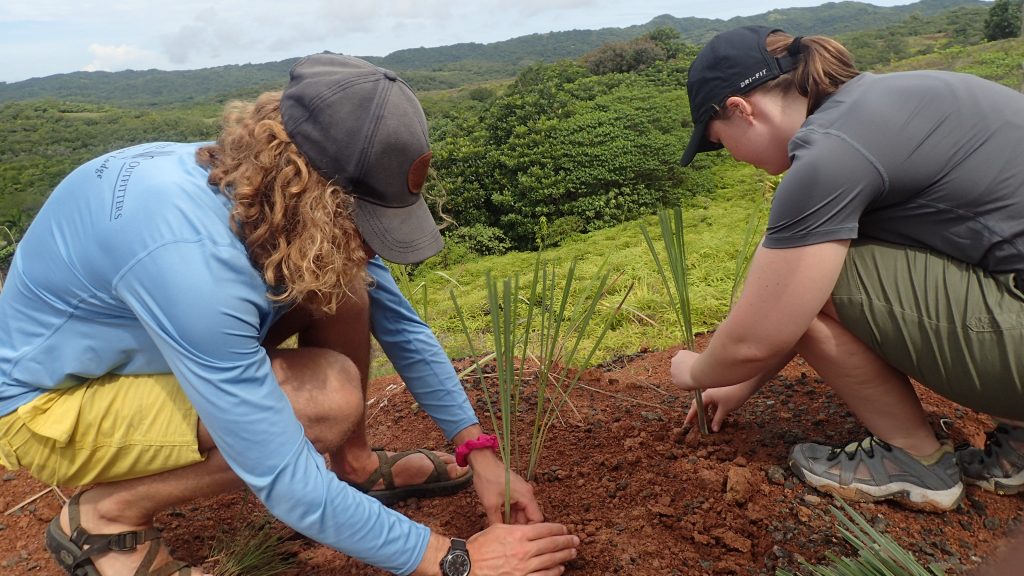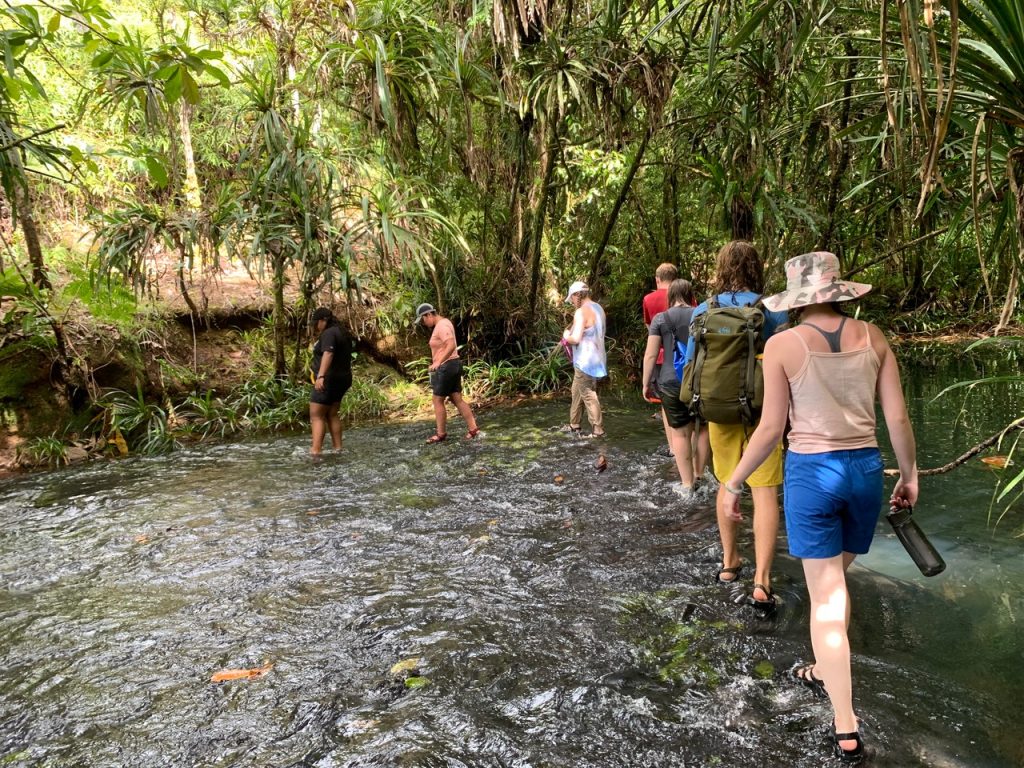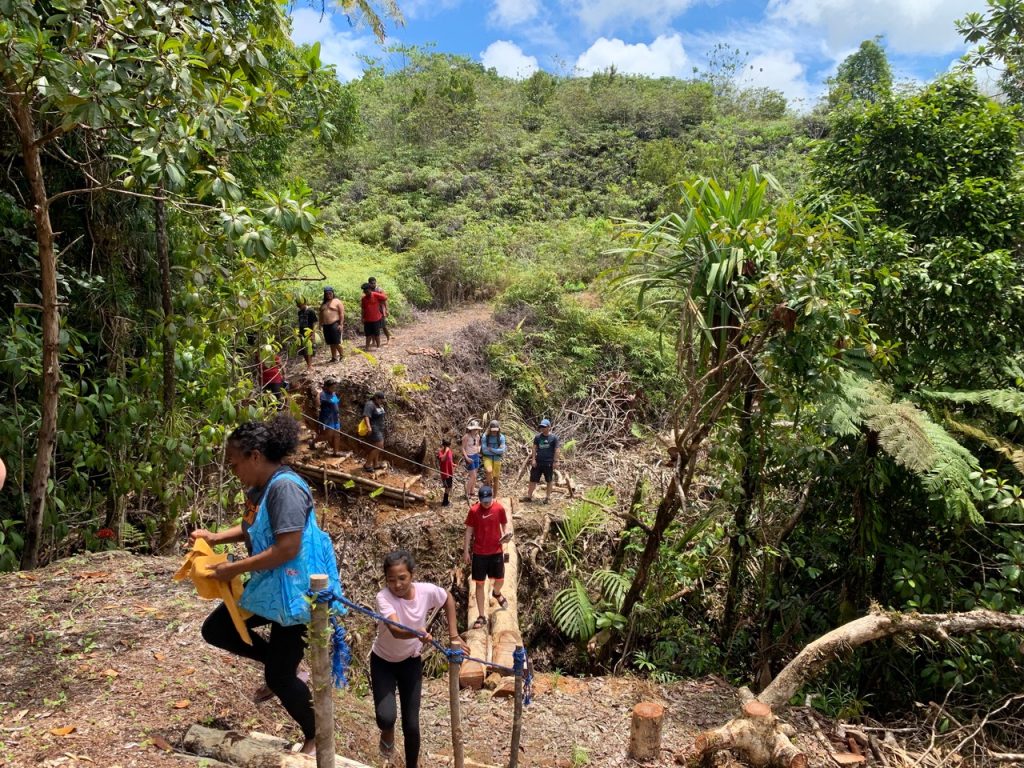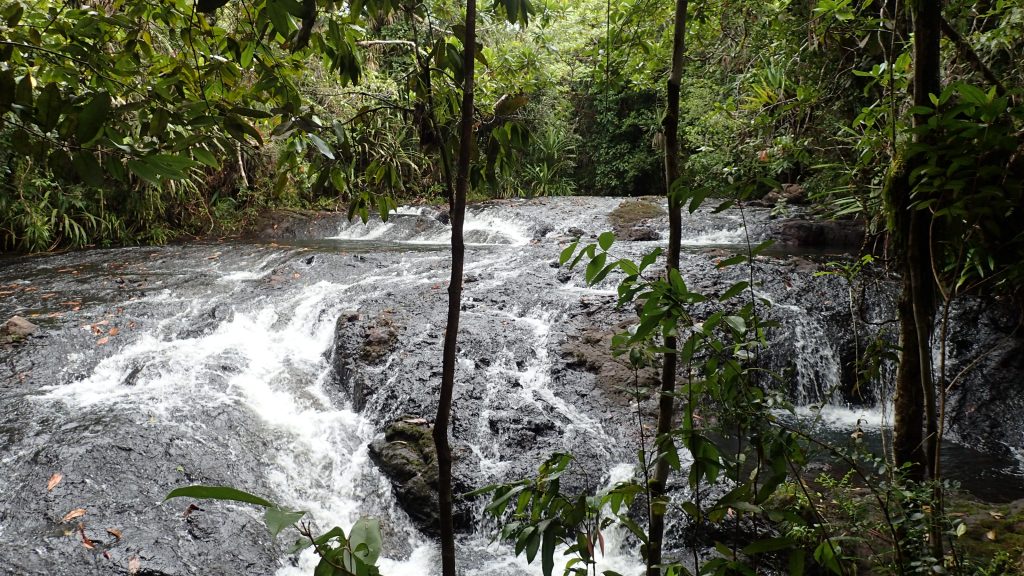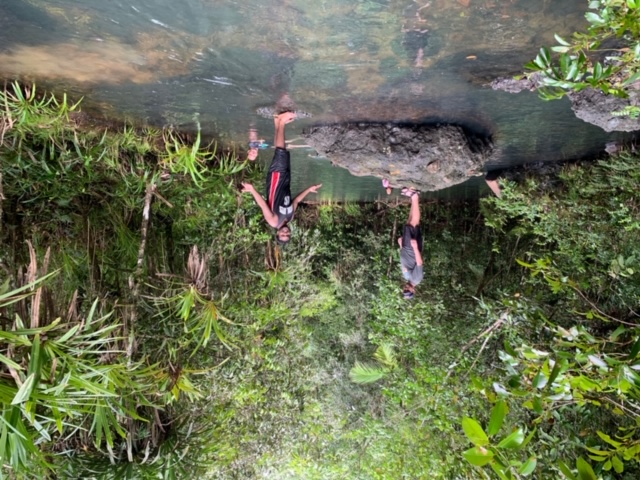
Day 12 on Palau consisted of snorkeling, stone money, and ethnobotany! We headed out on a boat to patch reefs outside Koror. After snorkeling for about 20 minutes, we had to pack up and head to a different location because the sea was becoming too rough. (Rumor has it that a typhoon is developing over Yap, a small island near Palau, and headed this way.)



After snorkeling, we hiked up the Balang trail where people from Yap used to travel to harvest Aragonite, a type of stone only found on Palau, to make their stone money. Stone money pieces are huge (sometimes up to 12 feet in circumference) donut -shaped slabs used as women’s currency in Yapese culture. One of these slabs was left on the island after being cut and sculpted because it was broken during the moving process and therefore worthless.


After hiking the Balang trail, we snorkeled in the reef right off the quarry. Within the Rock Islands, the water is more protected from storms and was much more calm than our previous snorkel that day. During this snorkel, we saw some human-made trash, unfortunately. Even in remote areas like Palau, plastics and littering are still an issue for marine and terrestrial life. Our team picked up around 20 pieces of trash from just that one snorkel site. It can be easy to disassociate yourself from your garbage when you don’t have to witness what happens with it afterwards. However, seeing the plastic bags and Coke cans on the bottom of the ocean floor, with fish swimming in and out of them can be eye-opening. The FW 391 gang would like to remind you to Reduce, Reuse, and Recycle!

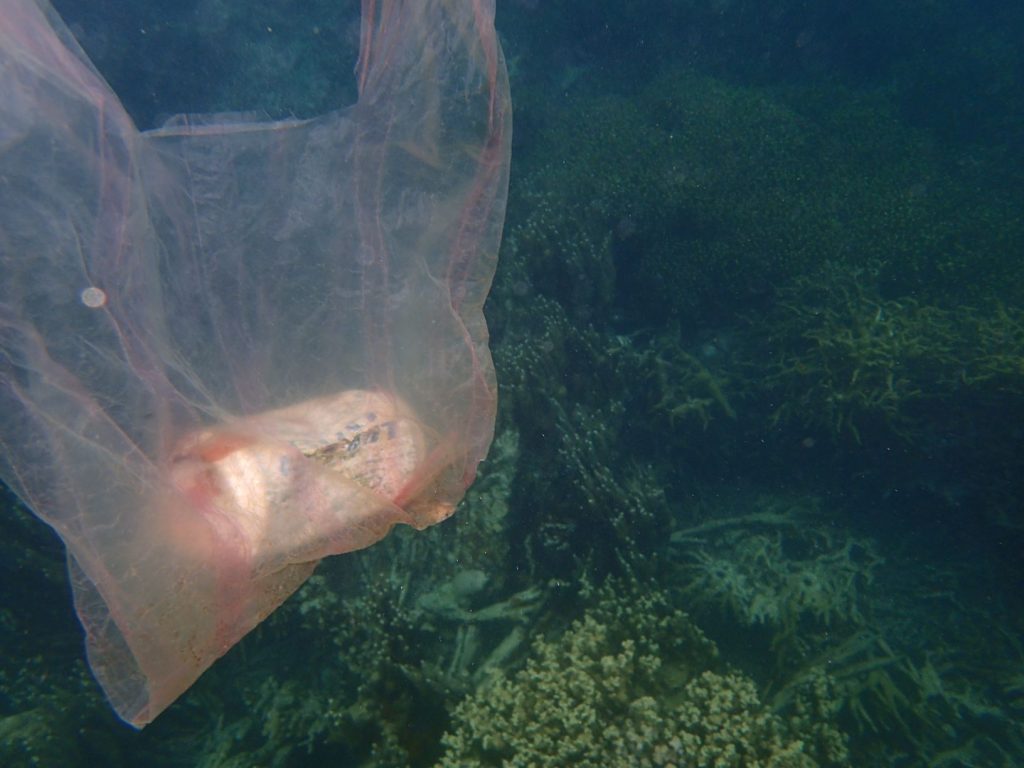
One of the discoveries made on this snorkel trip was a wild Day Octopus, pictured at the beginning of this blog. Student Tate originally found this octopus hiding in a hole in a mound of coral. As the octopus moved to different parts of the coral, its body shape, texture, and color would change to match its background. If you took your eye off of it, you would probably never find it again.


After leaving the snorkel site near the Balang trail, a storm hit the ocean. Intense, cold rain poured down on the gang and we had to get creative.



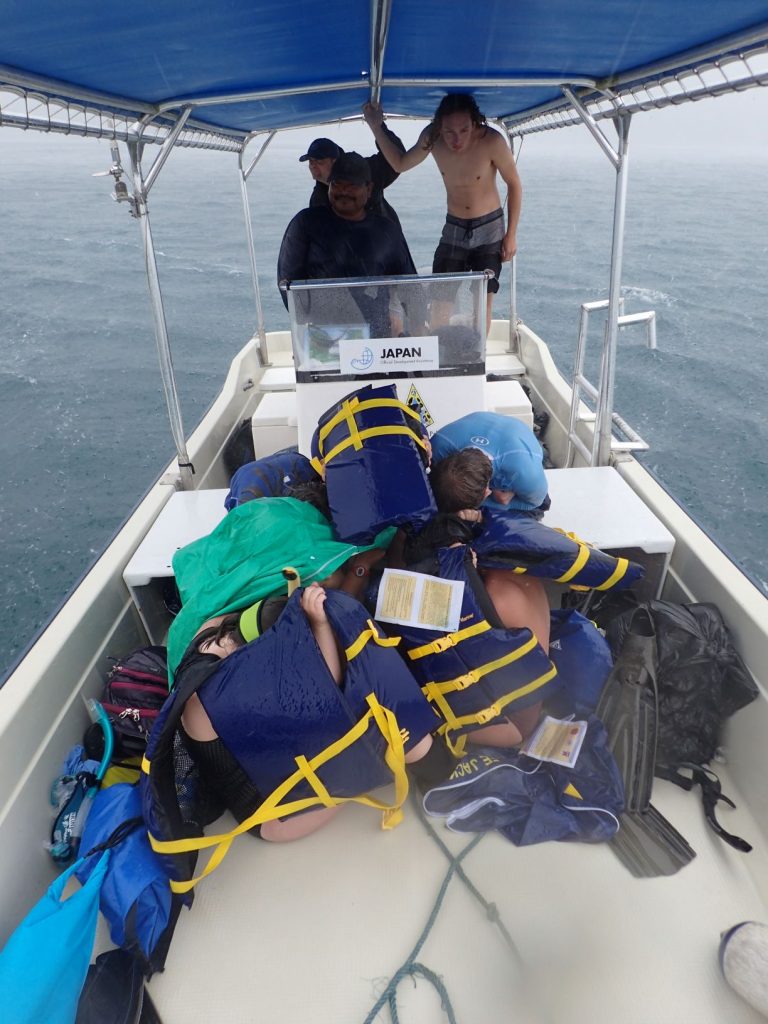
The day ended with a lecture in ethnobotany by Dr. Chistopher Kitalong. His research focused on using traditional Palauan plants as medicine to help treat diabetes on the island. He discovered that the traditional ways are more effective for treating the islanders than the modern Western medicine.

All in all, it was successful day! We are very grateful to our boat captain for navigating us through the storm, our instructors for their insight and advice, the PCC students and Dr. Kitalong for allowing us to sit in on their lecture, and to all of Palau for granting us a 12th day on this beautiful island.
Written by:
Simone Burton, Oregon State University, Marine Biology major, Graduating June 2021
Katherine Healy, Oregon State University, Women and Gender Studies



